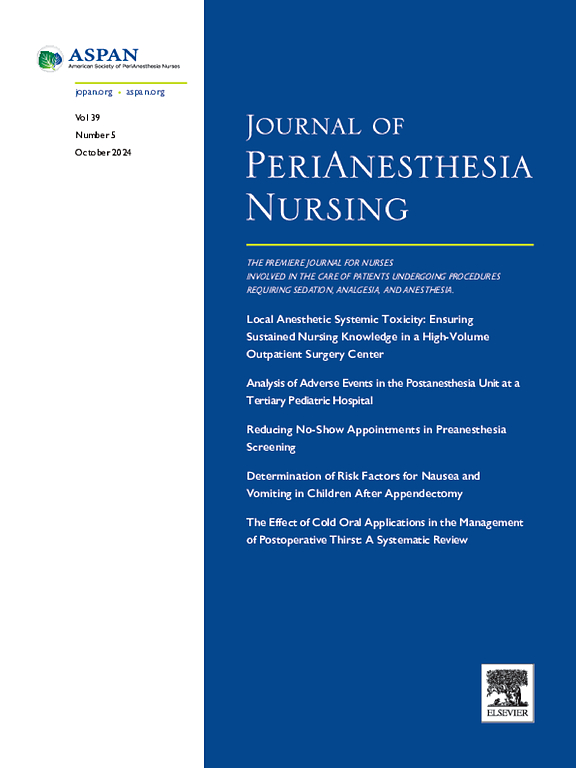Pain Intensity After Cardiac Surgery and its Association With Kinesiophobia: A Descriptive Study
IF 1.6
4区 医学
Q2 NURSING
引用次数: 0
Abstract
Purpose
Severe pain and fear of pain may decrease physical activity and restrict movements after cardiac surgery. This study aimed to determine pain intensity after cardiac surgery and its association with kinesiophobia.
Design
This was a descriptive and correlational study.
Methods
The study was conducted with cardiac surgery patients (n = 170). The sample size was calculated by using the G*POWER 3.1 program. According to the power analysis, the sample size was calculated as 170, taking into account the dependent variable with the largest sample size (kinesiophobia) and 20% loss. The outcome measures were pain and kinesiophobia collected using the Visual Analog Scale and Tampa Kinesiophobia Scale.
Findings
Married patients were at the greatest risk for kinesiophobia, higher than that for single patients (β = −3.765, β = −3.609; P < .05). Obese patients were at the greatest risk for kinesiophobia higher when compared to patients of normal weight (β = −2.907, P < .05). No statistically significant correlation was found between the pain intensity and kinesiophobia scores (P > 0.05).
Conclusions
Kinesiophobia was higher in patients after cardiac surgery. Married and obese patients were predictors of kinesiophobia; however, pain was not associated with kinesiophobia.
心脏手术后的疼痛强度及其与运动恐惧的关系:一项描述性研究。
目的:心脏手术后,剧烈疼痛和对疼痛的恐惧可能会减少体力活动并限制运动。本研究旨在确定心脏手术后的疼痛强度及其与运动恐惧的关系:设计:这是一项描述性和相关性研究:研究对象为心脏手术患者(n = 170)。样本量通过 G*POWER 3.1 程序计算得出。根据功率分析,考虑到样本量最大的因变量(运动恐惧)和 20% 的损失,计算出样本量为 170。研究结果采用视觉模拟量表和坦帕运动恐惧量表对疼痛和运动恐惧进行测量:结论:已婚患者患运动恐怖症的风险最大,高于单身患者(β = -3.765,β = -3.609;P 0.05):结论:心脏手术后患者的运动恐怖症发病率较高。结论:心脏手术后患者的运动恐惧感较高,已婚和肥胖患者是运动恐惧感的预测因素,但疼痛与运动恐惧感无关。
本文章由计算机程序翻译,如有差异,请以英文原文为准。
求助全文
约1分钟内获得全文
求助全文
来源期刊

Journal of Perianesthesia Nursing
NURSING-
CiteScore
2.20
自引率
17.60%
发文量
279
审稿时长
90 days
期刊介绍:
The Journal of PeriAnesthesia Nursing provides original, peer-reviewed research for a primary audience that includes nurses in perianesthesia settings, including ambulatory surgery, preadmission testing, postanesthesia care (Phases I and II), extended observation, and pain management. The Journal provides a forum for sharing professional knowledge and experience relating to management, ethics, legislation, research, and other aspects of perianesthesia nursing.
 求助内容:
求助内容: 应助结果提醒方式:
应助结果提醒方式:


